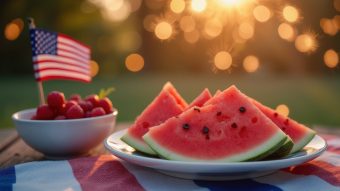March 14, 2022
Contact: Kenny Gerling, 573-882-6217, gerlingk@missouri.edu
Walk through almost any grocery store and it’s hard to miss — prices on food staples from cereal to steaks are going up.

Scott Brown, director of strategic partnerships and associate extension professor at the University of Missouri College of Agriculture, Food and Natural Resources, studies the economics of food prices and is closely tracking the consumer price index (CPI) of major agricultural commodities. Brown discussed some of the obvious (and not so obvious) reasons behind the rapid rise and what consumers can expect in the months ahead.
What is happening to food prices?
It’s many things, from prices at the farm-level to those added as the food is on the way to the restaurant or bought at the grocery store. I like to say that 80% of the value is added to basic commodities after they leave the farm. Those costs are being driven higher by increasing labor and energy costs, as well as other supply bottlenecks related to COVID-19. That leaves 20% of costs at the farm level, where we’re now seeing higher livestock, dairy, wheat, corn, fruit and vegetable prices. Those are the two pieces — farm prices and the costs that are added on after — that make up overall food price inflation.
How is the conflict between Russia and Ukraine impacting prices?
We’re hopefully coming out of some of the worst of the COVID-19-related effects, but now we’re likely heading into effects related to Russia-Ukraine. There are three big impacts that I’m seeing. The first is the increase in crude oil prices. Second is wheat, since Ukraine is important to overall wheat production in the world and wheat prices are really taking off. The third is sunflower oil. Ukraine has been a large sunflower producer and produces a lot of sunflower oil.
Are prices rising for some food products faster than others?
Thus far, it isn’t evenly spread. Since August 2021, beef is really leading the way. Two things are important to the rapid runup in beef prices: Consumer demand for beef has been strong, and supplies of beef have begun to slow down given where we are in the cattle cycle. That’s the biggest one, but I can pick out something like cheese that until earlier this year was running below year-ago levels, but is now also increasing.
How has this impacted producers?
For farmers and producers, they may see stories of food price inflation, but they don’t enjoy the higher prices — at least in the same proportion as at the retail level. Labor on the farm and higher fuel prices drive the farm-level costs higher as farmers try to adjust production given those higher input prices.
How unusual is this situation?
This situation is fairly unusual. For 2021, the annual CPI for food is up 3.9%. That’s the largest annual increase since 2008, when we were up 5.5%. The February 2022 CPI for food is 7.9% higher than the year ago level, the highest increase since July 1981.
What impact could this have on consumer food spending?
The percentage of disposable income spent on food averages around 10%. This depends a lot on your income level — for example, lower income folks spend a larger portion of income on food. All things considered, it’s a relatively small portion of monthly income, so many people can absorb some food inflation without having to make large changes. Some of the changes that might happen have to do with away-from-home food consumption. Higher value eating-out experiences go away, or people who do eat out are going to less expensive restaurants.
How do prices stabilize?
I do see this as a trend that’s not going away very quickly. It’s very difficult to see CPI for food moving lower after an upward adjustment. We have not had a negative annual rate of growth over the 2008–2021 period. The way it ends is we slow inflation, we don’t turn it down. From 2010–2019, we averaged 1.7% CPI a year, that may be a good long-term place to frame ourselves. I think we will find ourselves in a better situation when we don’t have the same labor shortages we have today, and we have other inputs like crude oil moving lower. But predicting either of those events is tough. I’m not convinced we lose these costs very quickly.
To arrange an interview with Brown, please contact Kenny Gerling with the MU News Bureau at 573-882-6217 or gerlingk@missouri.edu.



